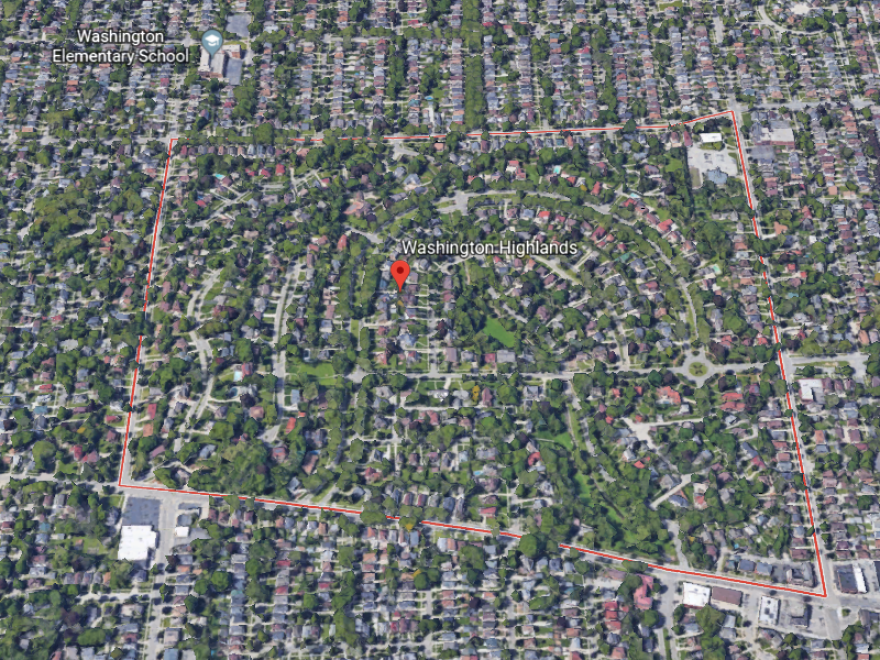The Washington Highlands neighborhood consists of 375 beautiful, large houses arrayed over 133 acres on the eastern edge of Wauwatosa, between 68th and 60th Streets. If you're not familiar with the Highlands, I think we can – with impunity – call it the "high rent district."
There's a common rumor about the neighborhood that Julia Griffith wants to end. She's the program director for Historic Milwaukee, which is planning a program around the area.
"There was this persistent rumor that [the neighborhood] was designed to look like a Kaiser's helmet. And a few of our researchers, myself included kind of determined that we thought that wasn't the case, but we're trying to kill the rumor," she explains.

So, for Bubbler Talk — our series where you ask, we investigate and together we unveil the answers — this is kind of cheating because Julia came to us with a hypothesis, not a question. Not only did she have a hypothesis, but she also had a source for us to turn to.
"Yeah, I did. But you know, we work with some great independent volunteer researchers who have access to more information around the city than you would think exists and I wanted to share their knowledge with you guys," Julia says.
So, the story is that Washington Highlands is shaped the way it was because the developer either covertly or overtly decided that they wanted to shape it like a Prussian army helmet.

Inside the Highlands is Applecroft Park — its base is at the intersection of Washington Circle and Washington Boulevard — which was once an orchard on the Pabst Farm, and it's where we meet Brian Fette.
He's a researcher for the May 11 Historic Milwaukee Spaces & Traces tour, which is covering the 100th anniversary of the Washington Highlands. And the district is on the National Register of Historic Places.
Now, back to the helmet.
"It's a rumor that just won't die. It has very long legs, and almost every generation, somebody will need to refute this story," Brian says. He likens this situation to the rumor that if you play a certain Beatles song backward you can hear "Paul is dead."
"It's a rumor that just won't die. It has very long legs, and almost every generation, somebody will need to refute this story," says Brian Fette.
But the myth does have more than just shape going for it: One of the landscape architects who planned the Highlands in 1915 was the German architect Werner Hegemann. And his firm was hired by a group of developers named Richter, Reutemann, and Adolph Dick.
So, if it wasn't a sneaky idea by a group of people with various connections to Germany, why does the neighborhood look the way it does?

"The reason they designed it the way they did was to not have to grade this from its natural landscape, not have to destroy the trees. … The other problem is a creek runs right through the center," Brian says.
He says the reason the beginning of Washington Circle looks like a top half of a "helmet" to some people, "is because developers couldn't build the land where the creek comes through. That was parkland. Now, Hegemann walked through here extensively to try to figure out how do we lay out the streets following the contours."

So, the neighborhood is laid out the way it is because that's what the terrain looks like. Brian also points out one other flaw in the Prussian helmet theory: "People also see the Washington Highlands from the air … Well, Charles Lindbergh didn't come by until 1927, so they would have been premature or maybe they were thinking very far ahead."
So, just as Julia suspected: the shape of Washington Highlands has much less to do with German propaganda and much more to do with a hill on the east side of Wauwatosa. But have we killed the rumor?
"I really hope so. I'm going to share this with as many people as I can find to work on that," she says.
Have a question you'd like WUWM to answer? Submit your query below.
_









